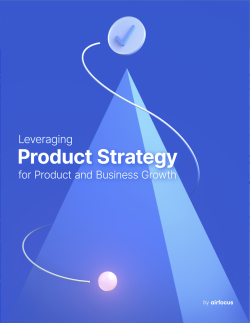Competitive Differentiation
What is competitive differentiation?
Competitive differentiation definition
Competitive differentiation is the way in which a company’s product, service, or offering is distinct from that of its competitors.
Competitive differentiation is based on key aspects of a product or other offering that customers value: branding, functionality, pricing, and/or customer service, and so on.
These distinctions are a crucial component of any company’s marketing approach and are frequently used to ensure that potential buyers understand what makes their offering unique in order to attract and acquire long-term customers.
Examples of competitive differentiation
There are multiple ways to differentiate a product.
Questions that companies need to ask themselves are, “How will you be addressing the needs of your customers?” and “What do you want your position in the market to be?” How your product or service will be differentiated will depend on your answers to these questions.
Do you want your offer to be the cheapest on the market or the most premium, for example? Will you be addressing the customers’ needs in an innovative or disruptive way versus your competitors or will you be looking to improve on their methods? The possibilities are endless.
Six types of competitive differentiation
There are six main types of competitive differentiation:
Reputation Differentiation
Reputation-based differentiation orbits around image and/or branding. This is typically achieved through a blend of targeted advertising, superior offering quality, and/or performance. The focus of reputation-based differentiation is on communicating the value proposition in a unique and memorable way.
Price Differentiation
Pricing is subjective — and some customers will be willing to pay more than market price for a quality product, service or brand. This is most commonly seen in goods priced at a “premium” due to high production costs, craftsmanship, or rarity. SaaS products can also become caught up in a price differentiation battle as lower-priced new entries land in the market.
Relationship Differentiation
This form of differentiation is done through a company’s employees and/or other key team members. A business with a strong focus on customer service can use this differentiation to its advantage — after all, having customer questions and concerns resolved quickly, accurately, and conveniently is a direct link to high levels of customer satisfaction.
Distribution Differentiation
Different channels of distribution can be used as a method of differentiation. This can include the availability of a product or service, its ease of ordering, and what level of technical or customer service it requires.
Service Differentiation
Service differentiators are the different ways your company can create relationships with prospective buyers. These commonly include support emails, service calls, live chat bots, and social media direct messages.
Product Differentiation
As the most visible of all possible differentiators, product differentiation focuses on the features, performance, and effectiveness of the offer at hand.
Synonyms of competitive differentiation and what they mean
The terms ‘competitive advantage’ and ‘focus strategies’ are often used interchangeably with ‘competitive differentiation’.
Competitive differentiation is actually a core component of having a competitive advantage — companies need to differentiate themselves from their competitors first in order to have a competitive advantage against them and, in turn, gain traction in the market.
Meanwhile, focus strategies involve achieving competitive differentiation within a company’s specific market — usually in a way that wouldn’t have been possible if they hadn’t differentiated their offering first.
How to build a competitive differentiation strategy
The first step in building a successful competitive differentiation strategy is to conduct a competitive analysis framework. This is a model you can use to guide your market analysis and decide on how to differentiate your offering.
SWOT analyzes are a great way to do this (no matter how retro they are!). A SWOT exercise challenges you to evaluate your competitors’ strengths, weaknesses, (missed) opportunities, and what types of differentiators would be a threat to their success. You can also use a SWOT analysis of your own company to identify strengths and weaknesses that may have previously been overlooked.
General FAQ

Glossary categories
Create effective product strategy

Experience the new way of doing product management








